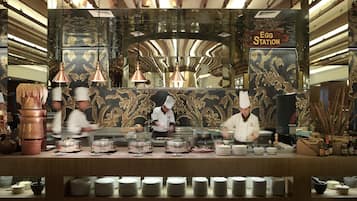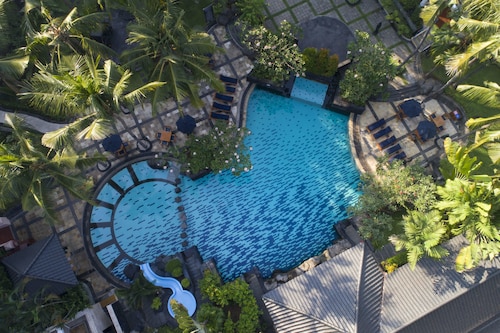Foto di Sharrie Shaw
Hotel di lusso a Tegalrejo
- Non preoccuparti se cambi ideaScegli un hotel con cancellazione gratuita.
- Concediti un viaggio specialeAccedi al tuo account e risparmia il 10% o più su migliaia di hotel.
- Trova l’alloggio che fa per teCerca fra un milione di strutture in tutto il mondo.
Hotel di lusso in zona Tegalrejo: controlla la disponibilità
Questa sera
Domani
Questo fine settimana
Il prossimo fine settimana
Hotel di lusso a Tegalrejo

Hotel Tentrem Yogyakarta
Yogyakarta
9.2 su 10, Meraviglioso, (316)
Il prezzo attuale è 123 €
tasse e oneri inclusi
7 dic - 8 dic
Prezzo a notte più basso trovato nelle ultime 24 ore, per un soggiorno di 1 notte per 2 adulti. Prezzi e disponibilità possono cambiare. Potrebbero essere previste condizioni aggiuntive.
Migliori recensioni hotel nei pressi di Tegalrejo

Plataran Heritage Borobudur Hotel
10/10 Eccellente
Scopri un mondo di viaggi con Expedia
Hotel vicino ad altre attrazioni
Gli hotel più richiesti a Tegalrejo
- ibis Yogyakarta Adi Sucipto
- Novotel Suites Yogyakarta Malioboro
- Melia Purosani Yogyakarta
- Swiss-Belboutique Yogyakarta
- Greenhost Boutique Hotel
- Plataran Heritage Borobudur Hotel
- ibis Styles Yogyakarta
- Gallery Prawirotaman Hotel
- Hotel Neo Malioboro by ASTON
- Dparagon Malioboro
- Manggolo Homestay Syariah
- Villa Borobudur Resort
- Hotel Le Temple
- Garrya Bianti Yogyakarta
![Batik (Javanese pronunciation: [ˈbateʔ]; Indonesian: [ˈbatɪk]) is a technique of wax-resist dyeing applied to whole cloth, or cloth made using this technique. Batik is made either by drawing dots and lines of the resist with a spouted tool called a canting (IPA: [ʈ͡ʂantiŋ], also spelled tjanting), or by printing the resist with a copper stamp called a cap (IPA: [ʈ͡ʂap], also spelled tjap). The applied wax resists dyes and therefore allows the artisan to color selectively by soaking the cloth in one color, removing the wax with boiling water, and repeating if multiple colors are desired.
A tradition of making batik is found in various countries, including Nigeria, China, India, Malaysia, Philippines and Sri Lanka; the batik of Indonesia, however, is the most well-known. Indonesian batik made in the island of Java has a long history of acculturation, with diverse patterns influenced by a variety of cultures, and is the most developed in terms of pattern, technique, and the quality of workmanship. On October 2009, UNESCO designated Indonesian batik as a Masterpiece of Oral and Intangible Heritage of Humanity.
Source: Wikipedia
These batik clothes are sold at one of the high end hotel's gift shop in Yogyakarta. They are hand drawn and painted and hence command a high price! It ranges over US$200 although some cheap batik at the market can be found for a mere US$2. The difference lies in the quality, the design and also the amount of skill that's needed to make them.
Common batik wear are made from cotton. The ones shown here are silk and limited in quantity produced.
Yogyakarta and Surakata (Solo) are two cities where batik originated in Indonesia.
#unesco](https://images.trvl-media.com/place/1718/09cd56ac-2be9-4518-ac77-e217d037b46b.jpg?impolicy=fcrop&w=1200&h=500&q=medium)




